Understanding Heat Pumps
To grasp the significance of heat pumps, it’s important to understand their definition and functionality. Heat pumps are devices designed to transfer heat from one place to another, providing both heating and cooling solutions for residential and commercial applications. They operate on the principle of heat transfer, utilizing a refrigeration cycle to move thermal energy against its natural flow, making them an efficient alternative to traditional heating and cooling systems.
Definition and Functionality
Some of the key components of a heat pump include the compressor, condenser, evaporator, and expansion valve, all working in harmony to maintain comfortable indoor temperatures. By extracting heat from the air, ground, or water, these systems can effectively heat or cool your space, offering versatile climate control with reduced energy consumption.
Historical Overview
Now that you have a foundational understanding of heat pumps, it’s interesting to explore their historical evolution. Understanding the history of heat pumps reveals how far technology has advanced, providing context for their growing importance in modern living.
Understanding the historical overview of heat pumps gives you insight into their development and broader acceptance over time. Initially developed in the mid-20th century, heat pumps gained traction due to their energy-efficient capabilities. As concerns over energy consumption and environmental impact arose, heat pumps evolved with improved technology, making them an increasingly preferred solution for both heating and cooling. With significant advancements in design and performance, they are now recognized as critical components in sustainable living, paving the way for future innovations in renewable energy integration.
Key Takeaways:
- Comprehensive Understanding: The guide covers the definition, history, and evolution of heat pumps, providing a solid foundation for readers new to the topic.
- Diverse Applications: Heat pumps are utilized in various settings, including residential heating, cooling, and hot water generation, as well as large-scale commercial operations.
- Efficiency Benefits: The guide highlights the energy efficiency and cost-saving benefits of heat pumps, positioning them as environmentally-friendly alternatives to traditional heating and cooling systems.
- Installation Insights: Detailed information on selecting the right heat pump, installation processes, and maintenance tips helps users make informed decisions and ensure optimal performance.
- Technological Advances: Coverage of emerging technologies such as smart heat pumps and advanced refrigerants illustrates the future potential and innovation in the heat pump market.
- Environmental Impact: The guide provides a comparison of heat pumps with conventional systems in terms of energy efficiency and carbon footprint, emphasizing their role in sustainable practices.
- Future Outlook: Insights into market trends and the integration of heat pumps with renewable energy sources position them as key players in achieving zero-energy buildings and sustainable living solutions.
Types of Heat Pumps
Little do many realize that heat pumps come in various types, each tailored to specific environments and needs. Understanding these different types allows you to choose the most efficient and cost-effective solution for your heating and cooling requirements. Here’s a breakdown of the main categories:
| Type of Heat Pump | Description |
|---|---|
| Air-source heat pumps | Utilize outside air to provide heating and cooling. |
| Ground-source (geothermal) heat pumps | Extract heat from the ground or transfer heat to it. |
| Water-source heat pumps | Use nearby water bodies for heat exchange. |
| Hybrid heat pumps | Combine different heating methods for efficiency. |
This comprehensive overview introduces you to the various types of heat pumps available in today’s market.
Air-source Heat Pumps
Pumps that utilize the outside air to provide heating in winter and cooling in summer. They operate by moving heat from the air, ensuring efficient energy consumption. Typically, air-source heat pumps are the most affordable option for residential heating and cooling, making them popular for many homeowners.
Ground-source (Geothermal) Heat Pumps
Groundsource heat pumps extract heat from the ground or transfer heat to it, leveraging the earth’s constant underground temperature. They are known for their high energy efficiency and are especially effective in extreme climates, making them a reliable option for year-round comfort.
It is important to note that while the initial installation cost of ground-source heat pumps can be higher than other systems, their long-term savings on energy bills and reduced environmental impact often justify the investment. Their ability to harness renewable energy from the ground contributes significantly to lowering your carbon footprint.
Water-source Heat Pumps
Types of heat pumps that use nearby bodies of water—such as lakes, rivers, or wells—to exchange heat. These systems can be very effective in maintaining comfortable indoor temperatures by taking advantage of water’s thermal properties.
Another benefit of water-source heat pumps is their efficiency in climates with stable water temperatures. They often require less maintenance than other systems due to fewer moving parts and can provide consistent heating and cooling all year round.
Hybrid Heat Pumps
Clearly, hybrid heat pumps combine various heating methods, such as air-source and gas furnaces, to maximize energy efficiency and comfort. These systems can automatically switch between different sources of heating depending on the temperature and cost, providing a customized approach to your heating and cooling needs.
Watersource heat pumps often work in tandem with other systems, enhancing overall energy efficiency and reducing operational costs. By integrating advanced controls, these hybrid models adapt to changing conditions while ensuring optimal performance throughout the year.
How Heat Pumps Work
Now that you’re interested in heat pumps, understanding how they function is crucial to appreciating their efficiency and versatility in heating and cooling applications. Let’s look into the basic principles that underpin this technology.
Basic Principles of Heat Transfer
Work is done through the transfer of heat from one location to another, which is central to how heat pumps operate. By leveraging the temperature difference between two environments, these systems can absorb heat from a cooler space and release it into a warmer space, effectively reversing the natural flow of heat.
The Refrigeration Cycle Explained
If you have ever opened a refrigerator, you have observed the refrigeration cycle in action. This cycle is fundamental to heat pump operation and consists of four main processes: evaporation, compression, condensation, and expansion. Each stage plays a crucial role in transferring heat, whether you’re heating a home or cooling it.
Principles of the refrigeration cycle are based on thermodynamics, where a refrigerant circulates and undergoes phase changes to absorb and release heat. In the evaporator, the refrigerant absorbs heat and evaporates, turning into a gas. This gas is then compressed, increasing its pressure and temperature. As it moves to the condenser, it releases the heat before cycling back to the expansion valve, where its pressure drops, and the entire process starts over. This continual cycle allows heat pumps to effectively transfer energy between indoor and outdoor environments.
Key Components of Heat Pumps
While understanding heat transfer is important, recognizing the integral components of heat pumps enhances your knowledge of their operation. The key parts include the compressor, condenser, evaporator, and expansion valve, each working in concert to facilitate efficient heat movement.
With these components, your heat pump becomes an intricate system designed for maximum efficiency. The compressor compresses the refrigerant gas, raising its temperature and pressure; the condenser releases heat to the indoor environment; the evaporator absorbs heat from the outdoor air; and the expansion valve regulates the flow of refrigerant to allow for the correct pressure drop. Together, these elements create a seamless process that allows you to enjoy a comfortable indoor climate year-round.
Pros and Cons of Heat Pumps
Your decision to consider heat pumps should involve a clear understanding of their advantages and disadvantages. Below is a concise comparison to help you evaluate whether heat pumps are the right choice for your heating and cooling needs.
Pros and Cons of Heat Pumps
| Advantages | Disadvantages |
|---|---|
| Energy efficiency, reducing your overall energy consumption. | Higher initial installation costs compared to traditional systems. |
| Cost savings on utility bills over time. | Performance may diminish in extreme temperatures. |
| Environmentally friendly, lowering your carbon footprint. | Regular maintenance is necessary to ensure optimal performance. |
| Versatile use for heating, cooling, and hot water generation. | Potential noise from outdoor units, depending on location. |
| Can increase the value of your property. | May require professional installation, limiting DIY options. |
Advantages
With heat pumps, you gain a highly efficient system that can effectively replace multiple heating and cooling devices in your home. They utilize renewable energy sources, resulting in significant savings on your utility bills while reducing your carbon footprint. Additionally, their versatility allows you to enjoy both heating and cooling functionalities in a single unit, contributing to long-term cost-effectiveness.
Disadvantages
Little-known challenges can come with heat pumps, including their higher upfront costs and specific performance limitations in extreme temperatures. While these systems work efficiently in moderate climates, you may notice a decrease in efficiency when the temperature drops significantly.
The potential for decreased performance in extreme weather conditions can be a significant drawback. In colder climates, heat pumps may struggle to extract sufficient heat from the outside air during winter, potentially requiring backup heating systems to meet your comfort needs. Furthermore, while the initial costs might be daunting, considering long-term savings and potential government incentives can provide some relief. Nonetheless, routine maintenance is crucial to ensure longevity and efficiency, which may involve additional expenses over time.
Choosing the Right Heat Pump
All heat pumps are not created equal, and selecting the right one for your home requires careful consideration of several factors. Each variable can significantly affect the system’s efficiency, effectiveness, and overall satisfaction.
Factors to Consider
An informed choice begins by evaluating key factors that influence heat pump performance and suitability for your needs:
- Climate zone and temperature extremes in your area
- Heating and cooling requirements based on your home’s size and layout
- Energy efficiency ratings, such as SEER, HSPF, and COP
- Type of heat pump (air-source, ground-source, water-source, or hybrid)
This comprehensive assessment will guide you in making a well-informed decision.
Tips for Selection
Right selection of a heat pump can significantly enhance your comfort and energy efficiency. Here are some imperative tips to consider while making your choice:
- Consult with HVAC professionals to assess your specific needs
- Consider available rebates and incentives in your area
- Take note of reviews and recommendations for reliable brands
- Verify the installation process to ensure quality and compliance
This guidance will lead you toward selecting the most suitable heat pump for your home.
Local Considerations
Local conditions play an imperative role in the effectiveness of heat pumps, influencing both efficiency and performance. Pay attention to the following aspects when considering a heat pump:
- Local climate and seasonal temperature variations
- Availability of qualified installers and maintenance professionals
- Utility rates and energy incentives specific to your location
- Potential impact of local environmental regulations on system choices
This localized understanding ensures that your heat pump will operate optimally and cost-effectively within your specific environment.
| Factor | Importance |
| Climate Zone | Affects the type of heat pump best suited for efficiency. |
| Size of Your Home | Determines the capacity needed for optimal heating and cooling. |
| Energy Efficiency Ratings | Indicates long-term operational costs and environmental impact. |
| Available Incentives | Reduces upfront costs and improves affordability. |
By weighing these factors carefully and using the tips provided, you can confidently choose the ideal heat pump that suits your specific needs, leading to enhanced comfort and energy savings in your home.
Installation Process
Once again, you’re entering into the intricate process of heat pump installation. Understanding the steps involved not only ensures a successful setup but also maximizes the efficiency of your new system. A well-executed installation can lead to optimal performance, longevity, and energy savings.
Step-by-Step Installation Guide
Assuming you’ve selected the right heat pump for your requirements, here’s a concise breakdown of the installation process:
| Step | Description |
| 1. Site Assessment | Evaluate location for optimal heat exchange and determine unit size. |
| 2. Prepare the Site | Clear area and ensure there’s access to necessary power sources. |
| 3. Mounting | Secure outdoor and indoor units, ensuring proper clearance and ventilation. |
| 4. Connect Refrigerant Lines | Properly insulate and secure lines to prevent leaks and energy loss. |
| 5. Electrical Wiring | Connect the unit to a dedicated electrical circuit. |
| 6. System Testing | Run initial tests to ensure everything operates smoothly. |
Key Considerations During Installation
For a successful installation, you need to consider several factors that can directly affect your heat pump’s efficiency and longevity.
Professional installers often emphasize the importance of proper sizing based on your home’s square footage and climate. Additionally, the location of the outdoor unit should be chosen thoughtfully to ensure minimal obstructions, allowing for optimal airflow. Integration with your existing heating and cooling systems also requires careful planning, while adherence to local codes and regulations is crucial to ensure safety and compliance. By paying attention to these considerations, you can set the stage for a heat pump that not only heats and cools efficiently but also saves you money in the long run.
Maintenance and Troubleshooting
Many heat pump systems can provide years of efficient service with proper care and maintenance. However, like any appliance, they require attention to ensure optimal performance and longevity. In this section, you’ll find vital maintenance tips, common issues that may arise, and solutions to keep your heat pump running smoothly.
Regular Maintenance Tips
There’s no substitute for routine maintenance when it comes to heat pumps. To help extend the life of your system and enhance efficiency, consider the following tips:
- Clean or replace air filters regularly.
- Check and clear outdoor units of debris.
- Inspect ductwork for leaks or blockages.
- Schedule professional maintenance at least once a year.
Recognizing the importance of proactive upkeep can prevent issues before they escalate and ensure your heat pump operates efficiently.
Common Issues and Solutions
Maintenance is key to minimizing the risk of problems with your heat pump. Some of the most common issues include unusual noises, insufficient heating or cooling, and reduced airflow, which can impact performance.
Regular maintenance checks can help identify and address these issues. For example, if you hear unusual sounds, it may indicate loose components or debris in the unit. If your heat pump isn’t heating or cooling effectively, dirty filters or refrigerant leaks could be the culprit. Addressing airflow problems could mean checking for blockages in ducts or replacing damaged insulation. By staying vigilant about these common concerns, you can maintain your heat pump’s efficiency and prolong its lifespan.
Cost Considerations
Keep in mind that understanding the financial aspects of heat pumps is necessary for making an informed decision about your investment in heating and cooling technology.
Initial Investment and Installation Costs
Costs associated with heat pumps typically include equipment pricing, which varies based on the type of pump you choose, and installation expenses, which can vary significantly depending on your location and existing infrastructure.
Operational Costs and Savings over Time
Over time, using heat pumps can lead to significant energy savings compared to traditional heating systems, which can offset initial costs. In fact, air-source heat pumps can reduce energy costs by up to 50% in comparison to electric resistance heating.
Operational costs are generally lower than those of conventional heating and cooling systems. Heat pumps operate with high energy efficiency ratings, often reflected in their Seasonal Energy Efficiency Ratio (SEER) and Heating Seasonal Performance Factor (HSPF). These ratings indicate how effectively your heat pump converts energy into heating or cooling, meaning lower utility bills for you in the long run.
Available Incentives and Rebates
Available incentives and rebates can help defray the initial expenses associated with heat pump installation, making your investment more accessible.
Cost savings can further be enhanced through various government programs and utility company incentives. Many regions offer rebates or tax credits for installing energy-efficient heat pumps, allowing you to recoup a percentage of your initial investment. It’s advisable to research local and federal programs that can make your transition to a heat pump more financially feasible.
FAQ
Q: What are heat pumps and how do they work?
A: Heat pumps are devices that transfer heat from one place to another using a refrigeration cycle. They can provide both heating and cooling by moving heat from a cooler space to a warmer space or vice versa. Basic components include a compressor, condenser, evaporator, and expansion valve, all working together to absorb and release heat efficiently.
Q: What types of heat pumps are available?
A: There are several types of heat pumps, including air-source heat pumps that transfer heat between the home and outside air, ground-source (geothermal) heat pumps that use the ground as a heat exchange medium, water-source heat pumps that utilize bodies of water for heat exchange, and hybrid heat pumps that combine different heating methods for efficiency.
Q: What are the benefits of using heat pumps?
A: Heat pumps offer numerous benefits, including high energy efficiency, which can lead to significant cost savings on energy bills. They also reduce carbon footprints by utilizing renewable sources of heat. Furthermore, heat pumps can provide both heating and cooling, making them versatile climate control solutions.
Q: What are the challenges of installing and maintaining heat pumps?
A: While heat pumps provide many advantages, there are challenges to consider, such as high initial installation costs and variable performance in extreme temperatures. Regular maintenance is also crucial to ensure efficient operation, which may require professional service and expertise.
Q: How can I choose the right heat pump for my home?
A: To choose the right heat pump, consider factors such as the size and capacity needed for your space, your local climate, and efficiency ratings like SEER (Seasonal Energy Efficiency Ratio), HSPF (Heating Seasonal Performance Factor), and COP (Coefficient of Performance). Consulting with a professional can help ensure proper selection and sizing.
Q: What are the operational costs associated with heat pumps?
A: Operational costs for heat pumps include energy consumption, which may vary based on local energy rates and the efficiency of the heat pump. Maintenance expenses should also be accounted for, including routine inspections and any needed repairs. Overall, heat pumps can offer lower operational costs compared to traditional heating systems.
Q: How do heat pumps impact the environment?
A: Heat pumps generally have a smaller carbon footprint compared to conventional heating systems, especially when driven by renewable energy sources. They promote energy efficiency and can significantly reduce greenhouse gas emissions. Furthermore, many manufacturers are moving towards eco-friendly refrigerants and sustainable manufacturing practices to minimize their environmental impact.
Related Posts
 Common Problems with Heat Pumps
Common Problems with Heat Pumps
 What to Ask When Buying a Nilan Heat Pump?
What to Ask When Buying a Nilan Heat Pump?
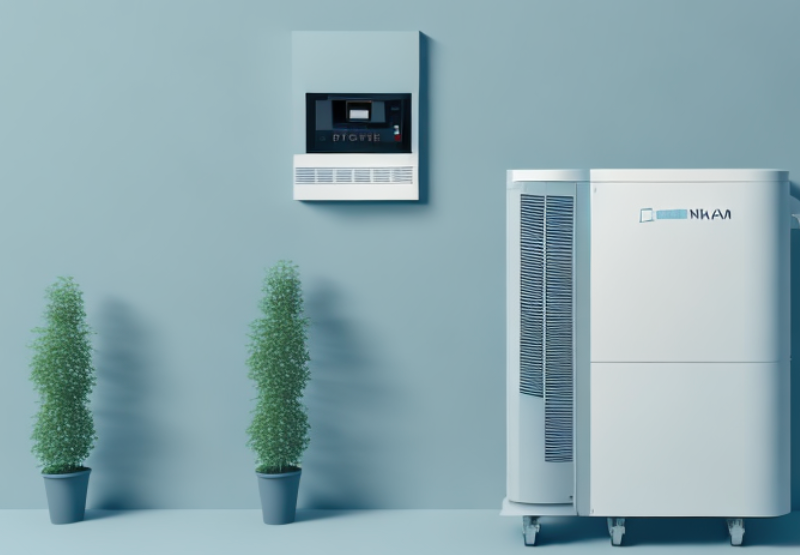 5 reasons why Nilan heat pumps are popular
5 reasons why Nilan heat pumps are popular
 5 Benefits of a Heat Pump – All Explained
5 Benefits of a Heat Pump – All Explained
 Unlocking Energy Savings: Your Guide to Government Incentives and Tax Credits for Renewable Heating
Unlocking Energy Savings: Your Guide to Government Incentives and Tax Credits for Renewable Heating
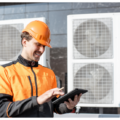 How To Ensure Proper Installation With A Qualified Nilan Installer
How To Ensure Proper Installation With A Qualified Nilan Installer
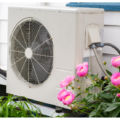 Are Piezoelectric Heat Pumps A Viable Alternative For Heating?
Are Piezoelectric Heat Pumps A Viable Alternative For Heating?
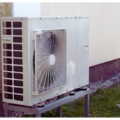 Why Thermionic Heat Pumps Could Be The Next Big Thing In Home Heating?
Why Thermionic Heat Pumps Could Be The Next Big Thing In Home Heating?
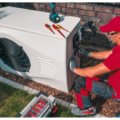 MVHR (Mechanical Ventilation with Heat Recovery) Systems
MVHR (Mechanical Ventilation with Heat Recovery) Systems
 Exploring The Science Behind Mechanical Ventilation With Heat Recovery
Exploring The Science Behind Mechanical Ventilation With Heat Recovery

